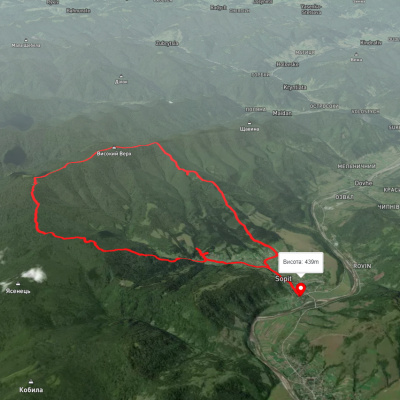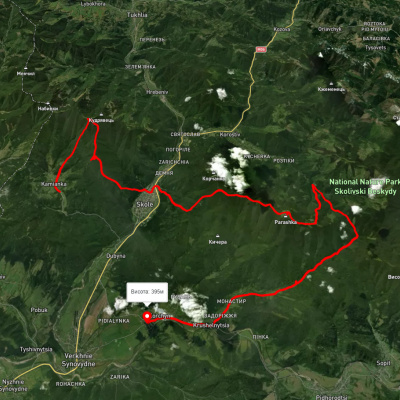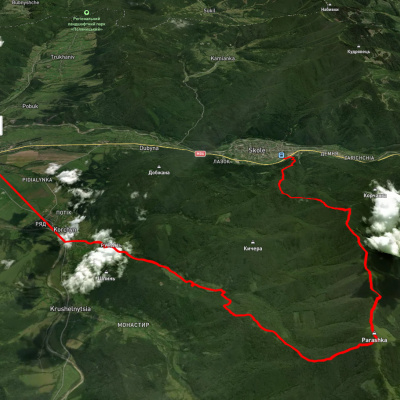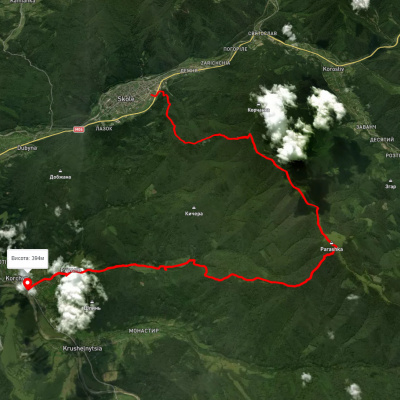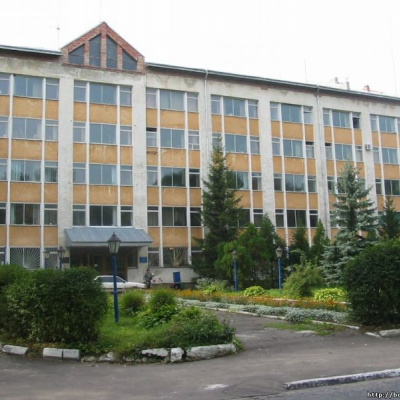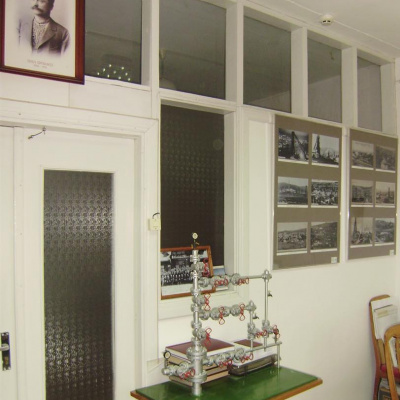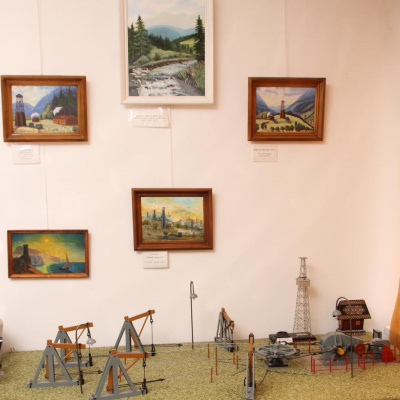From the Palace of Culture of Oil Workers, exhibits of the oil and gas industry were moved to the premises of the former St. Barbara's Church in Volianka, and then to the premises of the City Memorial. In the process, some of the exhibits were lost. Although the museum officially operated until 1995, there were only 182 pieces of museum collections, 72 of which were the main ones, and the rest of the exhibits were transferred to the collections of the city's History and Local Lore Museum.
In 2003, a newly created Museum Room of the Oil and Gas Industry of Ukraine was opened. The Museum of the Oil and Gas Industry of Ukraine is located in a building adapted to the administrative building of Boryslavnaftogaz (fifth floor). It is a technical museum.
The exposition of the museum room introduces visitors to the history of Boryslav oil production, the oldest oil industry in Ukraine in the late nineteenth and early twentieth centuries.
There are six stands with photographs of Old Boryslav from the late nineteenth century, a collection of kerosene and oil lamps, a collection of badges, medals, and calendars related to the oil and gas industry, a model of the "Tee fountain valve", "Injection of agent into the formation", working models of the "Group ghost keratics for oil production from compactly placed shallow wells", and "Wooden tower with a drilling and production rig (1910-1956), a kerosene compulsion, oils from Shell and Karpaty (1939), wheels from a cart that carried barrels of oil, videotapes about the Museum of the Oil Industry in Bubrka, Poland, books and magazines in Polish about the development of the oil industry, books about kerosene lamp museums, etc.
In 1903, the commercial production of the Boryslav oil region accounted for more than 50% of all oil produced in Galicia. And in 1909 it reached its peak of 1,920,500 tons, which was 93% of all oil produced in Galicia, which was 2,053,150 tons, which was almost 5% of world oil production at that time. Thus, the oil industry of Boryslav at that time ranked third in world production after the United States and the Russian Empire, which had captured the large Baku industry in Azerbaijan. The profits of Boryslav's oil producers were constantly growing. If in 1909 they amounted to 16.6 million crowns, in 1914 they already amounted to 47.7 million crowns.
Due to this large oil and ozokerite, and later gas industry, a research institution, the Geological Station, was established in Boryslav in 1912, which in 1932 was transformed into the Carpathian Geological and Petroleum Institute, the only one of its kind in Ukraine and Europe. And it was here, in the 1920s, that the first Museum of Geology and the Oil, Ozokerite and Gas Industry in Boryslav was created and operated. However, it lasted until 1952.
In 1972, it was decided to re-establish a museum of the oil industry in Boryslav. To this end, the Executive Committee of the Boryslav City Council adopted a decision on 15.11.1972. And on December 30, 1972, the Museum of the Oil Industry was opened in Boryslav in the premises of the then Palace of Culture of Oil Workers, for the first time not only in Ukraine but in the entire Soviet Union. It was also the first in Eastern Europe. After all, in Western Europe, near Ukraine, museums of this kind were solemnly opened to visitors on October 8, 1961, on the "Oil Worker's Day" in Ploesti (Romania) and on March 8, 1972, in Bubrka (Poland).
According to the passport, as of 1973, the Museum had 502 units of general funds, 272 of which were main funds. Many Boryslav residents and enterprises contributed to the collection of materials and the design of the expositions. The most valuable and professionally made were the operating (moving) models of drilling towers, equipment and devices of the oil and gas industry, which can be called unique today. Petroleum engineer Yaroslav Myrko (1935-2017) was proposed as the head of the Museum on a voluntary basis. Since 1973, he had been the head of the laboratory of scientific and industrial research of oil production at the Ukrdipronidinfta State Institute in Boryslav, and since 1984 he had been a candidate of technical sciences.
But since the early 1990s, the museum has been virtually inactive, and some of its exhibits have been lost. Although the museum officially (formally) operated until 1995, with 182 items of general funds, 72 of which were basic, almost all of them were later transferred to the funds of the Boryslav City History and Local Lore Museum.
In the late 1990s, a native of Boryslav, a well-known Ukrainian oil scientist, academician, chief scientific secretary and vice president of the Ukrainian Oil and Gas Academy, chief researcher at the Institute of Geology and Geochemistry of Combustible Minerals of the National Academy of Sciences of Ukraine in Lviv, Doctor of Geology and Mineralogy Heorhii Boiko (10.03.1933-19.07.2002) often visited Boryslav on professional and private visits. He learned from local historian Oleh Mykulych that the Museum was not functioning. So he actively participated in the resumption of its activities, and in fact in the creation of a new Museum of the same profile. He professionally and persistently solved this problem in the cities of Lviv and Kyiv during 1998-2002. Thus, under the active activity of H. Boyko, according to the following proposal of the Ukrainian Oil and Gas Academy in Lviv from October 1998, with the support of the employees and management of Boryslavnaftogaz OJSC Ukrnafta (letter of 03.11.1998), according to the decision of the general meeting of UNGA of March 18, 1999 (paragraph 2.3), project proposals of the STC Naftogazbudproekt since 2001, and on the basis of the decision of the Board of OJSC Ukrnafta No. 3 of January 28, 2003, the Museum began to revive, and in fact to create anew in 2003-2006.
At first, in 2003-2004, thanks to the active work of local enthusiasts, the museum was built on public activities: Mykhailo Danchyshak, Mykhailo Romaniak, Oleh Mykulych, Liubomyr Mykhalevych, and Roman Bey (1944-2014), the search for and collection of exhibits took place. The Museum of the Oil and Gas Industry of Ukraine is located in a room with a total area of 21.42 m² in the administrative building of Boryslavnaftogaz Production Division of PJSC Ukrnafta at 26 Karpatska Brama Street.
In 2004, the remnants of the former Museum were moved from the premises of the City Palace of Culture to the administrative building of Boryslavnaftogaz. These are five large models of the history of the oil and gas industry, partially broken and damaged. Four of them were professionally restored by Roman Bey in 2004-2006. As of June 1, 2006, the museum's main collections amounted to 83 items. But the Museum's significant activity began after its registration on September 21, 2006, at the Department of Culture and Tourism of the Lviv Regional State Administration as a public museum institution of Ukraine in the official museum network of Ukraine.
The Museum houses original, historical monuments of the history and culture of the Ukrainian ozokerite and oil and gas industry. They are part of the Museum Fund of Ukraine and were accounted for in accordance with the procedure established by the current legislation. The scientific and methodological guidance of the Museum was provided by the scientific and methodological department of museum construction of the Lviv Historical Museum, as well as according to the instructions of the Regional Department of Culture and Tourism of the Ministry of Culture and Tourism of Ukraine.
In 2015-2017, in front of and next to the administrative building of Boryslavnaftogaz, the Department created a skansen, an open-air museum, which houses large-sized, operating (movable) unique historical technological equipment, devices, objects, and modern models of the oil and gas industry in Boryslav and the surrounding area for educational and excursion tours to popularize our historical and cultural heritage. In 2013, employees of the Museum and Boryslavnaftogaz also provided significant assistance with historical exhibits and professional advice in the formation of expositions during the creation of the Museum of Oil Fields of Galicia at the Training and Course Complex of Nadvirna Oil and Gas Production Division of Ukrnafta OJSC in the village of Pniv, Ivano-Frankivsk region.
In recent years, the activities of the Museum of the Oil and Gas Industry of Ukraine of the Boryslavnaftogaz Production Division have been carried out by its researcher mainly in two areas. The first is the preparation of materials and participation in two or three local and international scientific and practical conferences a year. The second is organizing numerous excursions. Currently, the largest number of excursions was in 2016. Thus, this year the Museum's researcher conducted 80 excursions, both during individual and group visits to the Museum. According to the entries in the guest book, 965 people took part in them. In addition to the Museum's premises and its skansen, a number of individual and group tours were also conducted at historical and modern oil and gas industry facilities in Boryslav, Skhidnytsia, and the surrounding area.
In 2007-2018, the Museum's numerous visitors included residents from many Ukrainian towns and cities, as well as guests and tourists from abroad. From such countries as: Poland, Romania, the Czech Republic, Austria, Germany, Italy, Belgium, Finland, Sweden, England, Switzerland, Australia, France, Scotland, the United States, Canada, Turkey, Israel, Algeria, Angola, India, the Kingdom of Thailand, the United Arab Emirates, Azerbaijan, Belarus, Russia, and others.
Activities to popularize the Museum and the history of the oil and gas and ozokerite industry in Boryslav are also ongoing as part of the GeoAttractions information and educational tour and the Galician California excursion and tourist project from Lviv, as a continuation of the Polish-Ukrainian Geo-Carpathian tourist route.
Opening hours: 8:00-17:00, lunch 12:00-13:00, Saturday, Sunday - days off.
Entrance fee: Free of charge.
Cost of the tour: Up to 5 people - 20-30 UAH, up to 10 people - 15 UAH.
